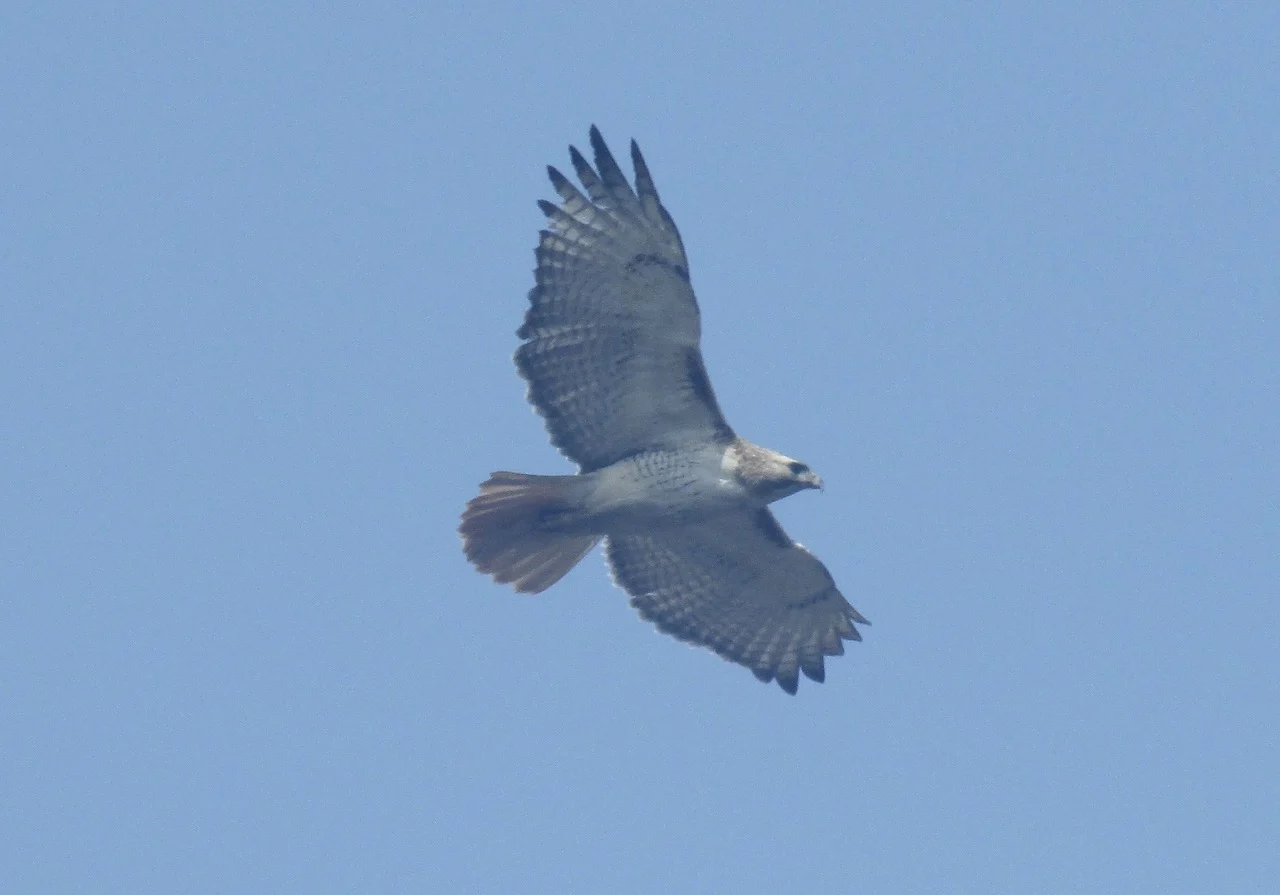
Billions of birds vanished since 1970, here's how to curb decline
North American bird populations have significantly dwindled in the last 50 years, with a staggering loss of nearly 3 billion adult breeding birds since 1970.
Birds are a critical part of our ecosystem, whether it's acting as pollinators, pest control or dispersing seeds.
But many species of birds are declining at an alarming rate. In fact, North American bird populations have significantly dwindled in the last 50 years, with a staggering loss of 2.9 billion adult breeding birds since 1970.
SEE ALSO: Since 1970, North America has lost 3 billion birds
Mhairi McFarlane, director of science and stewardship at the Nature Conservancy of Canada (NCC), told The Weather Network recently there are a number of factors contributing to the significant decline of birds.
But "one of the biggest underlying causes" in wildlife globally, particularly in Ontario, is habitat loss.
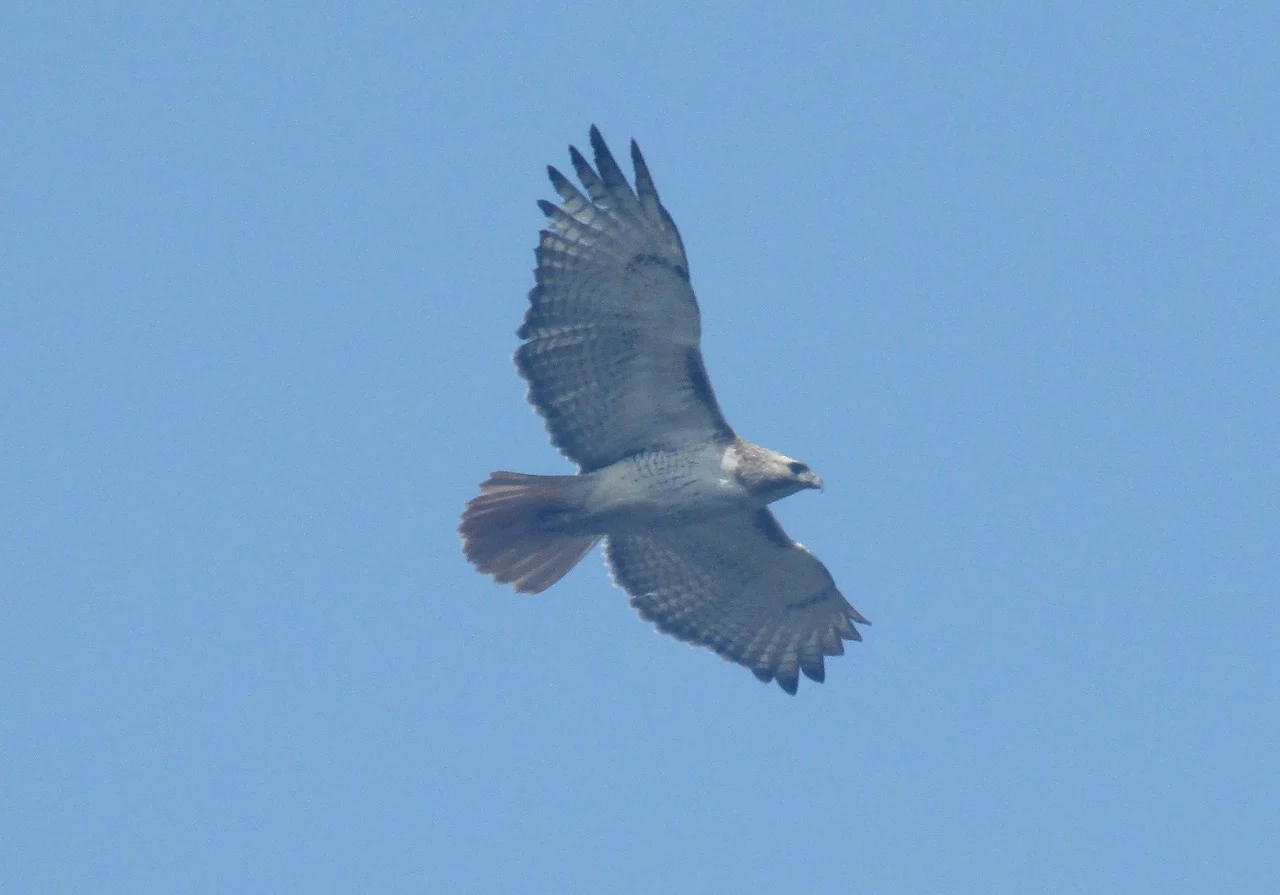
Red-tailed hawk. (Nathan Howes).
HABITAT LOSS MAJOR CONTRIBUTION TO DECLINE
"As humans have kind of expanded, doing the things that we need to do, we've removed an awful lot of habitat where birds used to be able to nest or hang out in the winter," said McFarlane.
She noted that the destruction of habitat has removed native vegetation communities that support the birds. "We've converted them to cities, to roads and to farm fields, all the things that we need for our business," said McFarlane.
Another reason is the influence of weather such as temperature changes, and the timing of when plants "green up" and insects first appear during the spring and summer, the Nature Conservancy of Canada director of science and stewardship said.
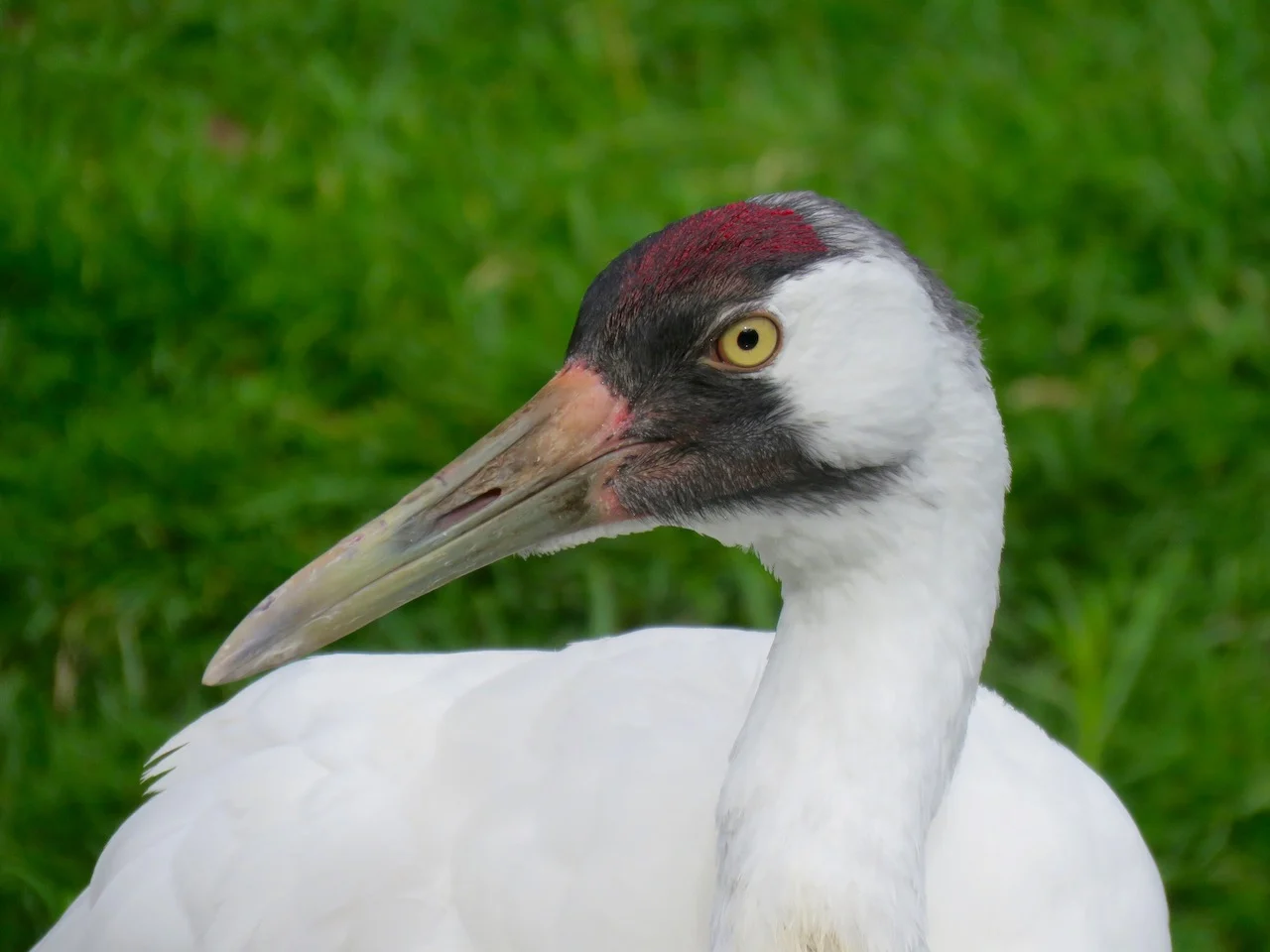
Whooping crane. (Ben Berg).
For example, chickadees are currently incubating in McFarlane's backyard, inside a nest box. Soon they will need to forage on caterpillars to feed the chicks, but the insects have already metamorphosed into butterflies and moths because of an early spring, she said, so the chickadees will struggle to find food for their offspring.
FLYWAYS ACT AS 'HIGHWAYS' FOR BIRDS
Some birds migrate through broad flyways, which act like "airborne highways" for them between breeding grounds and overwintering spots, according to the Nature Conservancy of Canada.
McFarlane said flyways are the routes of where the largest numbers of migratory birds go to in North America, but they travel in between these areas, as well.
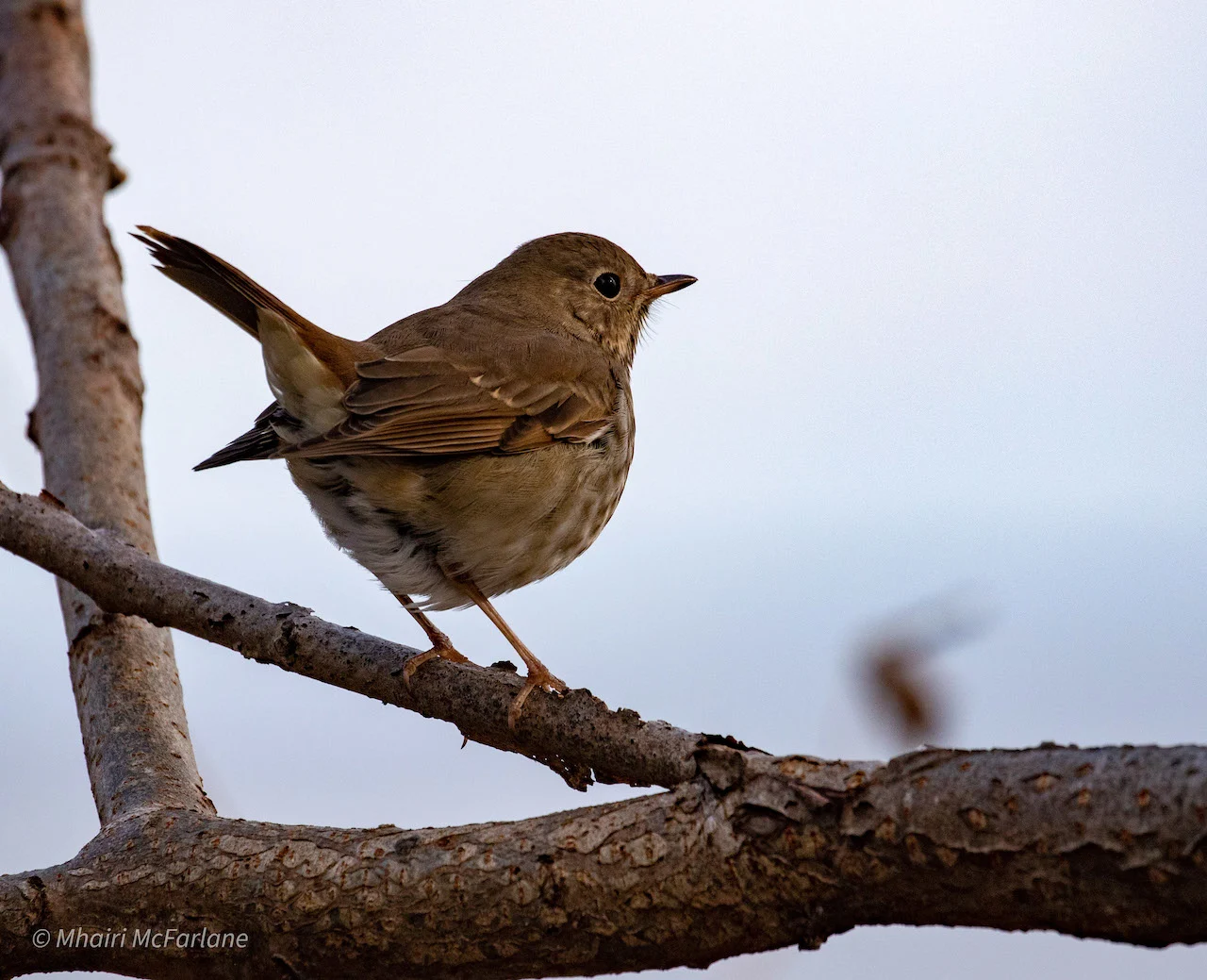
. Hermit thrush. (Mhairi McFarlane).
Depending on the species of bird, some will actually travel "thousands and thousands of kilometres" each year, she said, noting the Arctic tern as an example.
"They have, I think, one of the longest migrations of any bird species. There actually are some individuals that migrate between the Arctic and Antarctic. So they travel between the hemispheres every year," said McFarlane.
As well, it was discovered recently that the godwit will migrate across the Pacific Ocean and land in New Zealand, she said. "I think that is one of the largest, non-stop migrations that are known."
NOT ALL BAD: RECOVERY F0R BIRDS OF PREY
Despite the doom-and-gloom picture the statistics paint of the birds, there is some optimism as many species are actually seeing a recovery. Some of the birds of prey have seen a noticeable uptick in numbers as a result of years of conservation efforts.
Many of them suffered greatly over the years from pollutants such as the pervasive pesticide known as DDT (dichlorodiphenyltrichloroethane). DDT was widely used from the 1950s through to the 1970s, often being sprayed aerially onto forests to manage naturally occurring insect outbreaks.
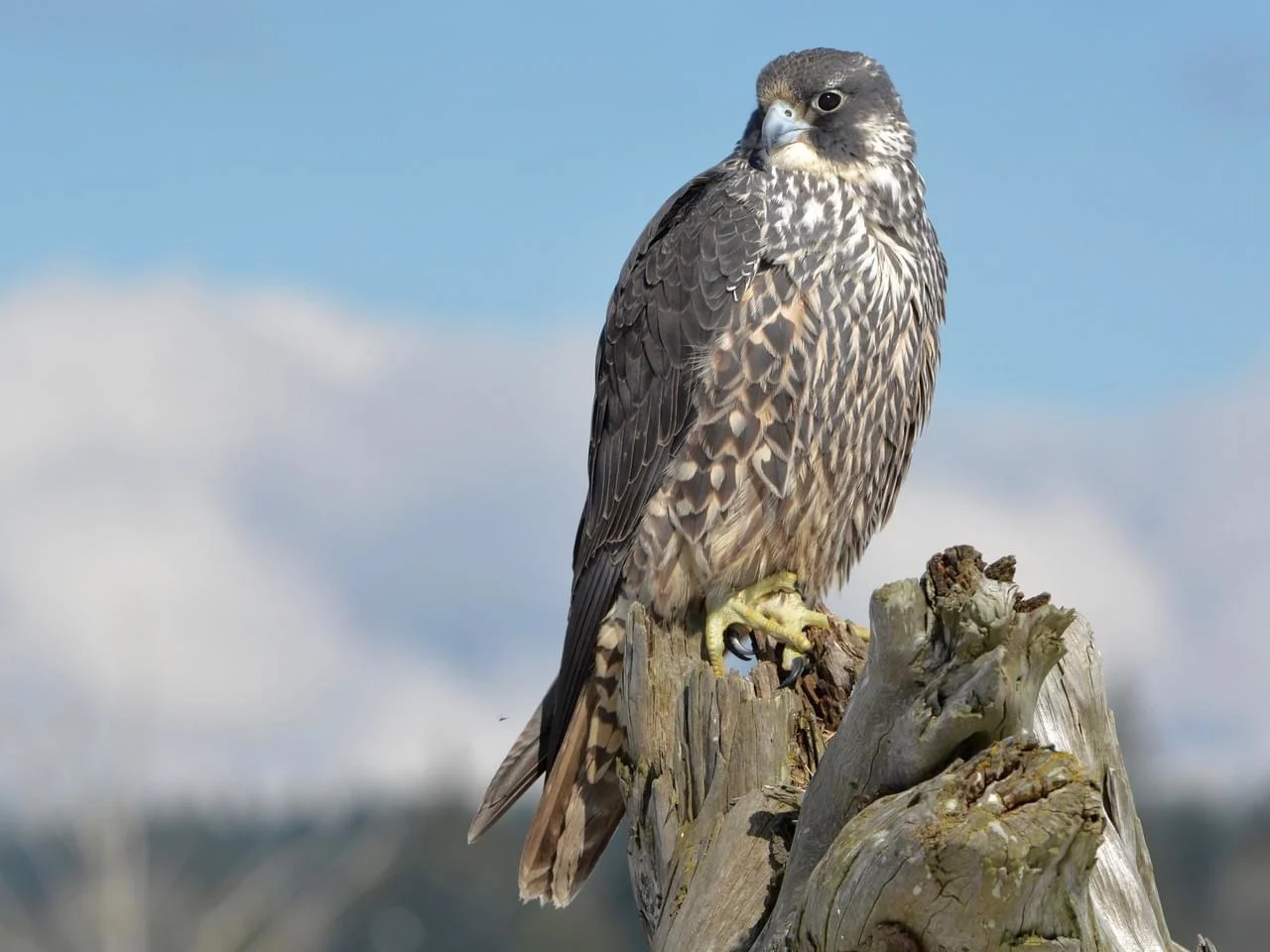
Peregrine falcon. (Bridget Spencer/Macaulay Library).
While DDT was banned in 1972, some species such as eagles are still suffering from some of the "legacy" of the pollutants, especially in the Great Lakes region, McFarlane said. However, they have recovered "quite substantially" and it's fairly common to see a bald eagle, even in the urban areas in Ontario.
Besides the eagle, the peregrine falcon -- once an at-risk species -- is also making a comeback in Canada, at least in part due to the phasing out of DDT.
"They have been kind of the poster child for the impact of DDT chemicals on raptors. They are also now breeding right in urban areas and quite a few cities in Ontario, which is really cool to see," said McFarlane.
Waterfowl have also seen a population surge in recent years, largely because of the protection of wetland habitat throughout the Americas.
HOW TO HELP BIRDS AT HOME
McFarlane said birds are being attacked or simply disturbed by outdoor cats, so keeping them indoors or reducing the amount of time they spend outdoors is vital. While it can be challenging, it's "arguably one of the easiest things that we can do to have the biggest impact on bird survival."
It is estimated that cats are responsible for the deaths of millions of birds in Canada each year.

Sanderling. (Mhairi McFarlane).
The other best thing we can do for birds, countrywide and locally, is to restore their habitat by planting native flowers, McFarlane said. It's key to avoid planting non-native vegetation such as the European buckthorn because they pose a threat to the local ecosystem, offering little support for insects and birds.
"You can think about what you're planting in your garden, if you have a garden. Planting ornamental or non-native plants, sure that can be pretty, but they're pretty useless when it comes to supporting wildlife," said McFarlane. "So try to choose even just a few native plants that will support both pollinators and other insects that the birds will eat."
As well, people can put markings on the outside of their windows to prevent birds flying into the glass, she stated, as their vision lacks an "evolutionary history" of glass and the animals see it as part of their habitat. McFarlane suggested using feather-friendly tape as a marker.
"You don't notice that terribly much as a human inside looking out. But it makes the outside of the windows much more visible to birds, and they don't think they can fly through it anymore. That can reduce window strikes by 100 per cent," said McFarlane.
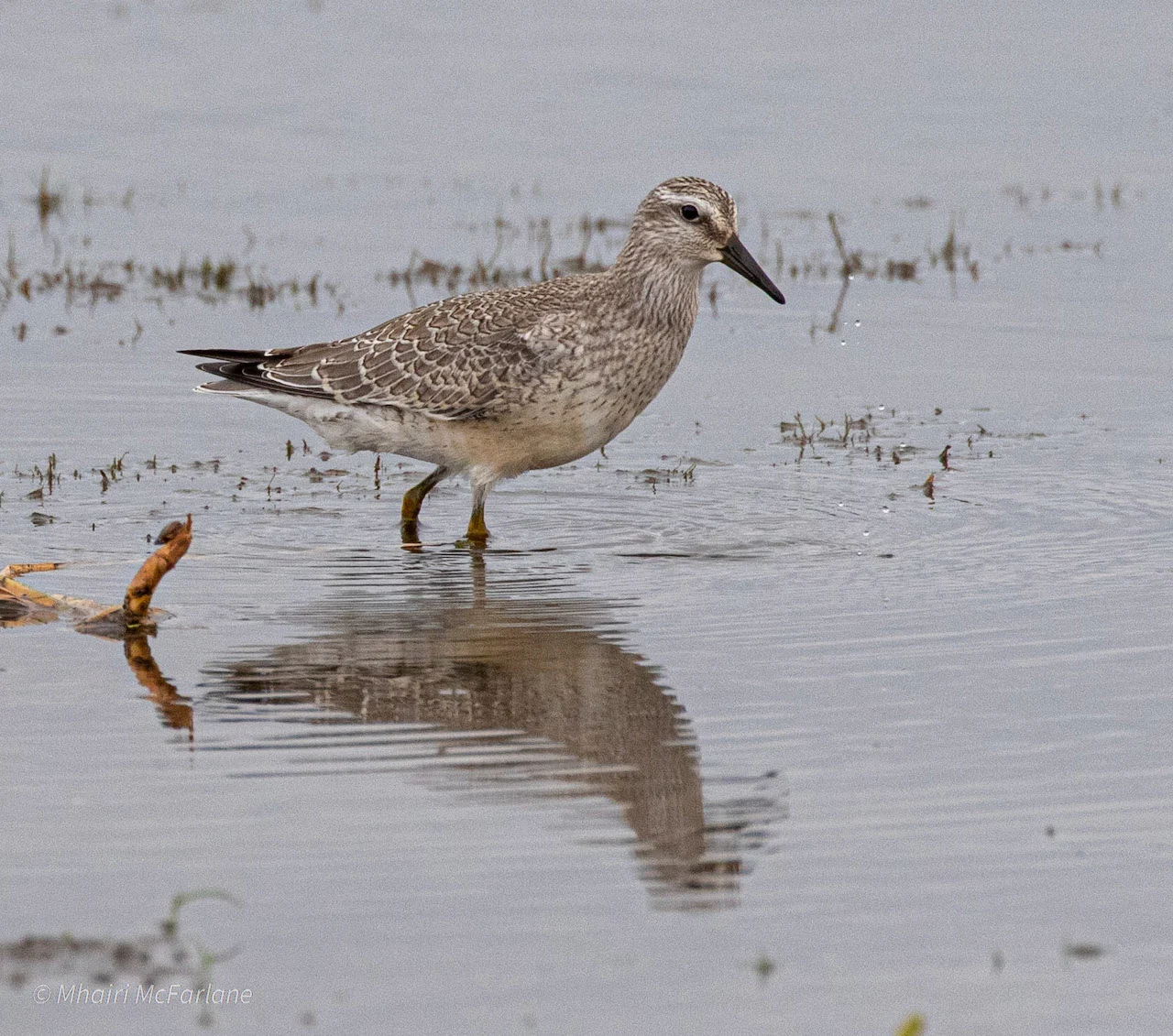
Red knot. (Mhairi McFarlane).
"If we can stop them being eaten by our cats and stop them killing themselves on our windows, then a huge difference can be made right now."
One more recommendation from McFarlane is to reduce the amount of light you leave on your property overnight, if possible, or just shut them off.
"Even if you just do it during the key migration periods, April through May and then August through September, then that will help birds with their navigation and stop them getting confused by urban light," said McFarlane.











